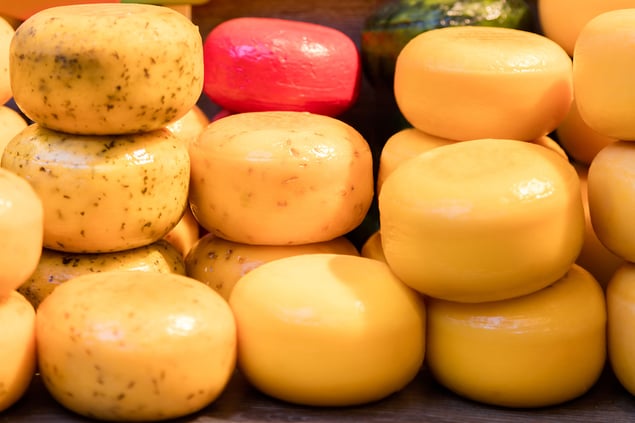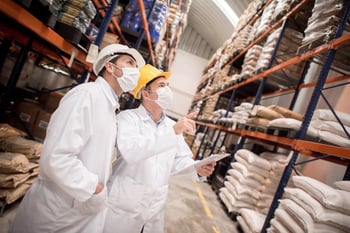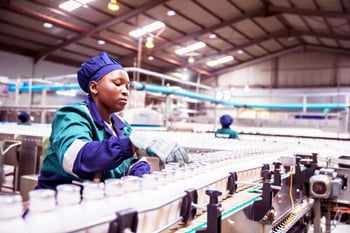 Inflation is hitting every industry, including the cheese and powdered cheese industries. Fresh cheese, in particular, experienced significant price volatility in the last few years, reaching a high of more than $2.70 for a 40-pound block of cheddar in 2020, then dipping to $1.50 in the summer of 2021. The year 2022 saw prices ebb and flow somewhere in between those two extremes on any given month.
Inflation is hitting every industry, including the cheese and powdered cheese industries. Fresh cheese, in particular, experienced significant price volatility in the last few years, reaching a high of more than $2.70 for a 40-pound block of cheddar in 2020, then dipping to $1.50 in the summer of 2021. The year 2022 saw prices ebb and flow somewhere in between those two extremes on any given month.
Volatility is a major challenge for food manufacturers. Market spikes can erode profits while a dip can be a temporary boon for business. Formulators and manufacturers would much prefer consistent and predictable ingredient costs that help them even out cash flow and provide stable pricing for their cheese-based products.
There’s a surge in companies looking for alternative ingredients to overcome supply issues and the associated volatility. The challenge comes in delivering the same quality, texture and flavor their customers have come to enjoy.
Cheese prices are inherently volatile due to the perishable nature of its raw ingredient, milk. But there are many other factors at play.
1. Supply Chain Disruption
Labor shortages are a main contributing factor to supply chain issues that continue to plague the dairy industry. This is true on farms and in production facilities, and also in the trucking industry used to transport raw goods.
Escalating feed costs are being driven by a rise in fertilizer prices, with some doubling in the last year. The Russian invasion of Ukraine has exacerbated the situation by triggering import-export restrictions. Global unrest affects globally interconnected supplies and creates a ripple effect throughout the world, driving prices higher.
2. Energy Costs
Contributing to volatile markets are higher gas and energy prices. Electricity for irrigation systems and energy used at food processing and packaging plants have risen markedly.
Costs to transport products continue to climb, giving ingredient suppliers who can source their raw materials regionally an advantage. The cost of diesel fuel now exceeds regular by a dollar or more in most states. This is due in part to greater international demand, far higher fuel taxes, and regulations that have led to increased refining costs.
3. Climate Change
Average temperatures are rising, with some estimating they’ll increase 3–6° F by mid-century (2041-2070). With rising temperatures and climate change come more extreme weather events — droughts in some regions and heavy downpours in others. Heat stress in dairy livestock can lead to reduced milk production. Both drought and torrential rainfall can reduce crop yield and result in unstable feed prices.
Using sustainable ingredients is increasingly popular among consumers. Of note is that Grande Gusto® reduced lactose whey — a viable alternative to fresh and powdered cheese — has a considerably smaller impact on global warming potential than all commonly used plant proteins and is considered an upcycled ingredient.
GET THE FACTS!
How Sustainable is Whey Protein vs. Plant Proteins?
A Solution for Supply Chain Disruption & Volatile Markets
Combatting supply chain disruption in the dairy industry starts with knowing where the raw ingredients are sourced. Using U.S.-based producers is a start, but it isn’t always enough; some domestic producers of cheese and cheese powders have also struggled with supply issues.
Consider, however, that raw materials used to produce Grande Custom Ingredients products are sourced from dedicated dairy farms, ensuring a consistent high-quality supply of value-added products.
To reduce reliance on fresh or powdered cheese with a single ingredient, look to alternatives that are readily available and price-stable. Grande Gusto is an innovative type of reduced lactose whey that can replace a portion of fresh cheese or cheese powder in formulations. The product’s rich mineral content and natural properties deliver the same or better quality, rich mouthfeel and umami flavor your customers expect. The high minerals also drive salty notes without the addition of sodium chloride, allowing formulators the added benefit of reduced sodium on labels. In fact, applications made with Grande Gusto were consumer-preferred in a controlled study for flavor and viscosity.
Grande Gusto is derived from a cheesemaking process without chemical modifications, resulting in clean flavors. It can be labeled as an all-natural and clean label ingredient. The proprietary process allows Gusto to hold water in suspension, improving the signature velvety texture customers expect in a cheese product.
Address supply chain concerns and volatility with an uninterrupted supply of ingredients that deliver a consistent price point. Request a sample of Grande Gusto to replace fresh cheese or cheese powder and connect with our formulation team to talk through your biggest challenges.



